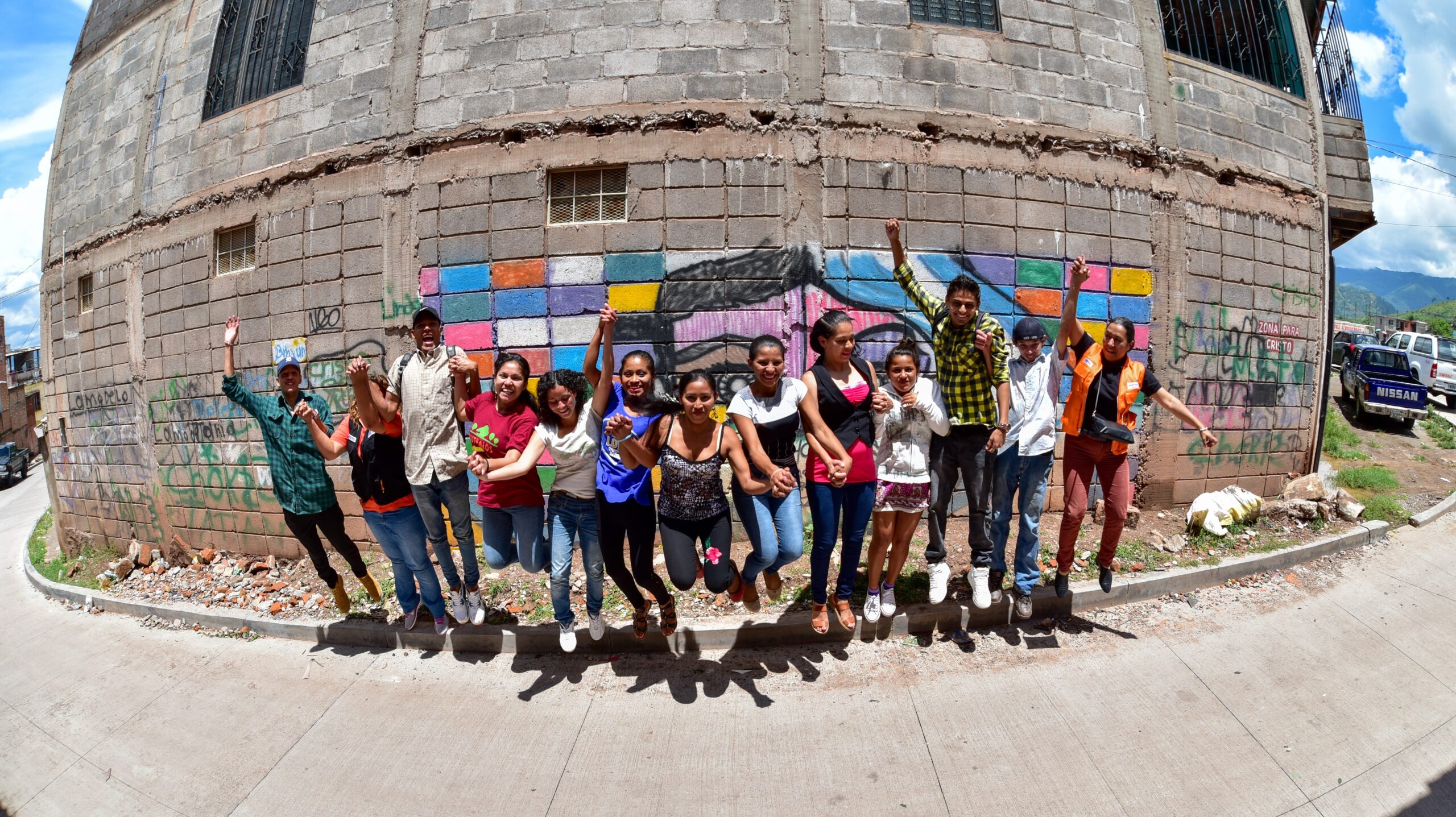Estimated read time: Six minutes
What are the root causes of violence in Central America?
There is unfortunately no easy answer to this vexing question. For many years, a deadly combination of interacting vulnerabilities have conspired to create an atmosphere of violence in Guatemala, El Salvador, and Honduras.
Violence is both a cause and an effect. It interacts with other ongoing vulnerabilities such as poverty and social exclusion, inequality, harmful cultural practices, and weakened rule of law and governance. In addition, Central America represents an important pathway for violent drug traffickers from southern countries to North America.
The impact of violence undermines development efforts. In 2019, the economic cost of violence represented 18% of GDP for Honduras and 13% for El Salvador. For countries like Mexico, Costa Rica and Dominican Republic, it was 10%, 6% and 5%, respectively. The direct costs associated with violence include the immediate consequences on victims, perpetrators, and public systems—including health, judicial, and public safety. The indirect cost of violence refers to longer-term costs such as lost productivity, psychological effects, and the impact of violence on the perception of safety and security in society. These resources could have been used to foster hope and opportunity in the countries. Below our experts and academic partners explain one approach World Vision is taking to get at the root causes of violence, not just address its symptoms.
An innovative approach to addressing violence in Central America

Michele Gonzalez-Mendia
Senior Regional Engagement Manager, World Vision
@gonzale_michele
Violence has a negative impact on all aspects of people’s lives— physical, emotional, economic, social, and political—and is a key driver for forced migration from Guatemala, El Salvador, and Honduras. Children, youth, and women suffer the most from the impact of violence. Despite pandemic lockdowns and social distance restrictions—and a slight decrease in homicides—news about homicides, disappearances, and recently, the increase of violence against women and children, make the headlines of country newspapers every day. This diminishes the fragile hope for a better future of the Central American people.
Sadly, there are two heartbreaking facts about violence in Central America. The first one is that youth are both the main victims and perpetrators. Every day, 67 adolescents are victims of homicide. That rate is five times higher than the global average. The second fact is that violence starts at home. In Latin America, 63% of children under 15 years old experience violent discipline at home (psychological or physical), and 43% of children under 15 years old are subject to corporal punishment at home. The places that should be the safest for children and youth are the ones in which they suffer the most violence. Honduras and El Salvador have the highest feminicide rates in the region. At the community level, gangs use sexual violence as a strategy to maintain fear and control. Rates of gender-motivated killings have increased dramatically over the past several years. The vast majority of sexual and gender-based crimes go unreported and unpunished. At the societal level, child poverty is a significant risk. In Guatemala, 53.8% of homes with children under 18 years old suffer from multidimensional child poverty, which considers social exclusion, poverty, and lack to access to basic services.
The risks related to violence in Central America are compounding and multidimensional. They call for a programmatic approach that addresses the root causes, builds resilience to better prevent or mitigate violence, supports positive adaptive capacities for youth in the face of violence, and focuses on initiatives that help transform relationships, norms, and behaviors.
Many approaches have been tried to address violence, from ‘mano dura’ (heavy-handed) government-led approaches to more inclusive, people-focused ones aimed at creating opportunities for youth to thrive. Based on an exhaustive analysis, Learnings From World Vision’s Work to Address the Root Causes of Forced Migration in Central America shows evidence of the success of building youth resilience. These learnings document the effectiveness of projects like the USAID-funded Strengthening Juvenile Justice System project in El Salvador, implemented by World Vision, which promotes a virtuous cycle of positive change to reduce recidivism; and World Vision’s USAID-funded Community Roots project, which seeks to address the root causes of forced migration and violence in the main out-migration regions in Guatemala.
At World Vision, we are committed to fostering hope and building resilience around the most challenging risks in Central America. In an effort to predict violent patterns and implement precise programmatic approaches, World Vision has partnered with Johns Hopkins University Bloomberg School of Public Health and USAID in an innovative effort to use the System Dynamics Model to identify the ecological risks and vulnerabilities that fuel violence. The outcome of this research will enable stakeholders to address the root causes of violence by building resilient capacities and creating pathways for innovation in tailoring solutions to prevent violence in the countries. Matt Stephens and Dr. Tak Igusa share more about this innovative undertaking.
What is the System Dynamics Model and why is it promising for addressing the root causes of violence?

Matt Stephens
Senior Technical Advisor on Child Protection, World Vision
System Dynamics (SD) is a modelling theory that seeks to articulate and predict the complex interplay of factors within a community ecosystem. SD maps out and quantifies the complex relationships between context-specific factors and vulnerability drivers, enabling entities to design programming with the highest potential for impact in a given setting.
One key feature of the SD model is that it uses local characteristics in the model-building process by taking a bottom-up approach. By quantifying and automating the complex relationships between various factors, the SD model enables program designers to test potential consequences of various interventions before field deployment and to make proper adjustments during implementation, which would not otherwise be possible.
Historically, programs designed to reduce violence against children have been linear in design—with one or two critical risk/vulnerability factors identified and single interventions applied to address these limited factors. Beyond the necessary assumption that the selected factors are, in fact, the most important factors to target in the first place, these designs also implicitly assumed that 1) these factors will remain the most important over time, and 2) the context and other variables influencing prevalence of violence will remain static.
We know, however, that violence is influenced in real time by multiple dynamic factors working at individual, household, community, and societal levels. System dynamics modelling aims to allow the tracking of this multitude of factors and the exploration of their interplay and influence on the prevalence of violence over time. The model relies on regular, quantitative data on multiple factors collected over time to demonstrate this interplay, and with enough longitudinal data to predict the effects of both changes in causal factors on prevalence of violence, as well as the potential effects of interventions. This allows for both improved planning of interventions and the opportunity to use data to inform real-time learning and adaptation of interventions to better address emerging critical factors as the context changes. For example, if data shows strong correlations between increasing machismo and alcohol/drug use on prevalence of community violence, interventions may be tailored to more directly respond to these factors. Alternately, if the model demonstrates effectiveness of a specific intervention (e.g., positive parenting/discipline) on community violence, projects can be flexible to increase or strengthen these interventions.
How does this innovative approach work?

Dr. Tak Igusa
Whiting School of Engineering, John Hopkins University
There are many aspects of this system dynamics project that are truly remarkable. The most significant is the way our team has embraced this new approach to applied research, especially those team members who are working in the communities. The SD modelling approach is inherently participatory, integrating contributions from adolescents and adults in the impacted communities and experts in academic and other research organizations. Starting from hand-drawn maps and proceeding through a series of refined representations of the system, the system dynamics approach uses a highly visual format to allow community stakeholders to be involved throughout the model building process. Through this process, each stakeholder can examine how the multiple interactions that impact them are related to the other stakeholders and other factors in the wider framework. We have already seen so much new knowledge that has been created by this teamwork.

From the initial mapping process, the team prioritized a set of critical factors to measure over time. In total, field teams will collect regular, quantitative data on over 40 factors influencing violence. Once data have been collected, data visualizations from the model allows us to “see” how the multitude of factors interact with one another to influence violence.
Though still early in our research, there is hope and anticipation of our progress in our next steps, as we integrate the data into the model and advance our capacity to measure and evaluate – with the ultimate goal of reducing violence against children.

What is the vision for blending this science-based approach with World Vision’s best practices in addressing violence at the community level?

Matt Stephens
Senior Technical Advisor on Child Protection, World Vision
Globally, World Vision has made an organizational commitment to address the root causes of violence against children in the countries and communities we serve. One of the keys to successfully applying a systems dynamics approach to address violence at community levels is access to consistent and regular local level data over time. World Vision’s transformational development approach, with long-term investments and programmatic presence in over 2,000 communities in northern Central America, makes us uniquely positioned to collect data over time using existing monitoring systems and structures. As the SD model becomes more refined using these data, our hope is that it can be expanded for application in other contexts as well. If the model is effective, it will allow World Vision and others working in the violence reduction space to design smarter programs, using data to better target interventions that are flexible enough for adaptation over time and ensuring that selected interventions produce higher social return on investment toward a safe and more protective environment for children and youth.
After this research, World Vision will use the data to tailor efforts to address the mains risks and vulnerabilities around violence through resilience efforts at individual, family, community, and societal levels, in partnership with faith-based organizations, local governments, private sector, and civil society.

Be part of the change happening in Central America
We invite you to stay tuned as this innovative and comprehensive approach develops and becomes a tool in fostering hope and building resilience in Central America. The task is not easy; adaptability will be critical for people to thrive at different levels. Please consider contributing our Central America Emergency Fund, or learn more about our work in the region here. You can also use your voice for change. U.S. foreign assistance strengthens countries’ abilities to respond to crises like COVID-19. Contact your members of Congress today and ask them to protect this critical funding.
For more information:
Michele Gonzalez-Mendia
Senior Regional Engagement Manager for Latin America and the Caribbean, World Vision
mgonzale@worldvision.org
Top photo: Participants in World Vision’s Youth Workforce Development and World Vision staff in Cerro de Plata ADP, Tegucigalpa, Honduras. In 14 locations around the area, this project is preparing more than 200 young people to go into the job market through teaching business skills and developing life plans, and eventual internships with over 100 partnering companies throughout Honduras.


